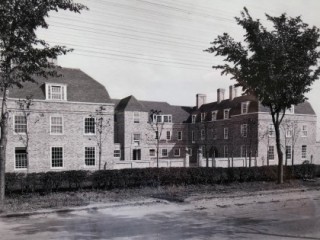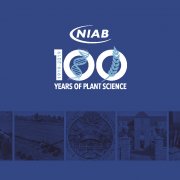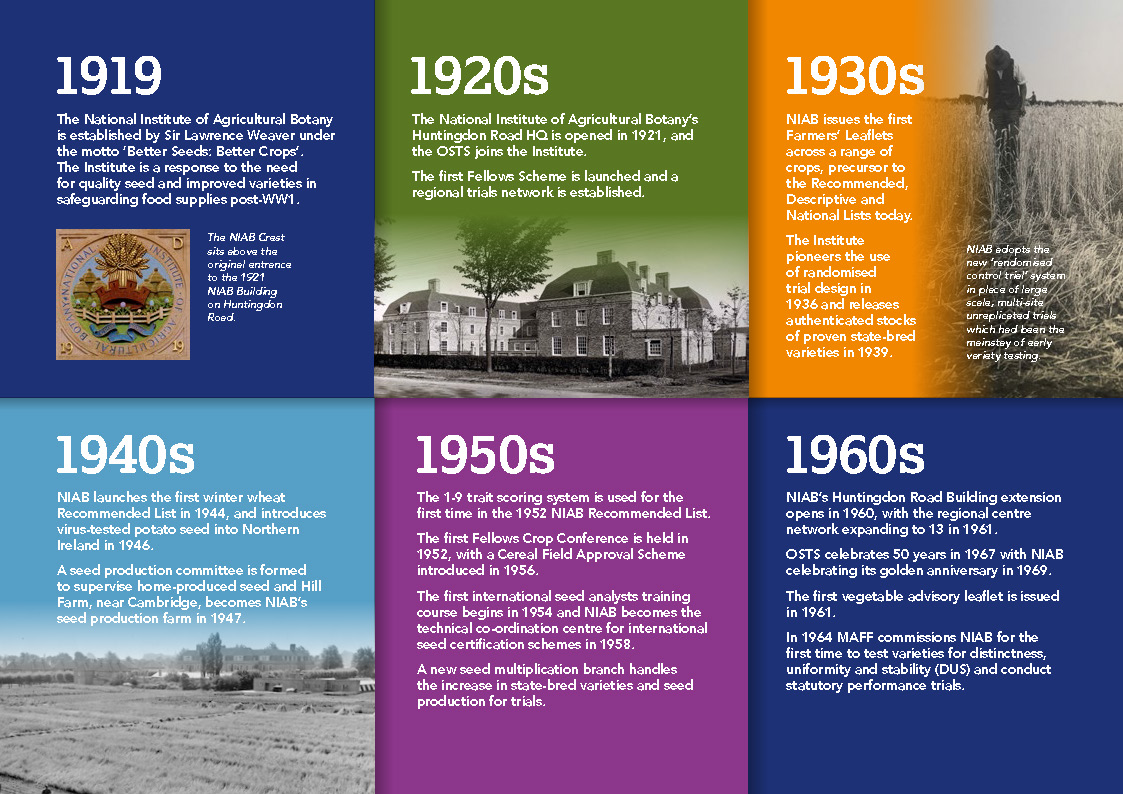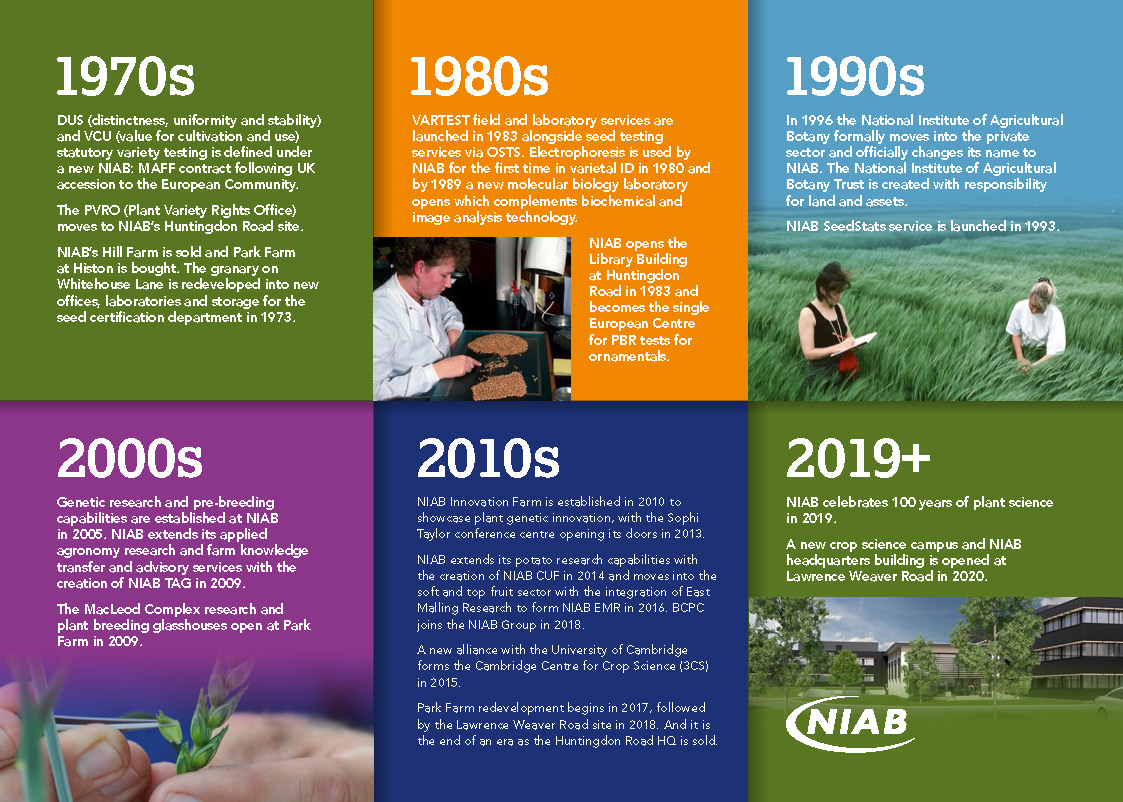
NIAB is one of Britain’s oldest agricultural science research centres. It was founded, as the National Institute of Agricultural Botany, in 1919, as a charitable trust, to promote the improvement of British crops.
For 100 years, NIAB has worked to improve agricultural and horticultural crop production, bringing together the specialist knowledge, skills and facilities required to understand the performance and quality of agricultural crop varieties and seeds. The original aims within the Trust are as relevant today as they were in 1919:
- promote the improvement of existing varieties of seeds, plants and crops in the UK;
- promote the improvement of methods of husbandry for the benefits of agriculture and horticulture;
- encourage the discovery of, investigating, and making known the nature and merits of treatments, inventions, improvements and processes which may benefit the industry.
NIAB - 100 years of plant science 
Published as part of NIAB's Centenary celebrations in 2019 this unique collection of photos and memories, also available in print form, represents the many aspects of the ‘Institute’ across the decades.
It offers a brief insight into the past, present and future; snapshots of the people, crops, equipment and science that have been at the heart of what was originally the ‘National Institute of Agricultural Botany’.
A timeline of NIAB's history


For a more detailed history of NIAB from 1919 to 1996, available in print form only from NIAB
Crop and Seed Improvement - a history of the National Institute of Agricultural Botany 1919-1996 (PS Wellington and Valerie Silvey (1997))
Also available:
Genetics, statistics and regulation at the National Institute of Agricultural Botany, 1919-1969. Dominic Berry (2014) - PhD thesis, University of Leeds
NIAB - East Malling
The history of fruit research at East Malling began with the East Malling and Wye Fruit Experimental Station which was established on the East Malling site in 1913 with the support of local fruit growers.
